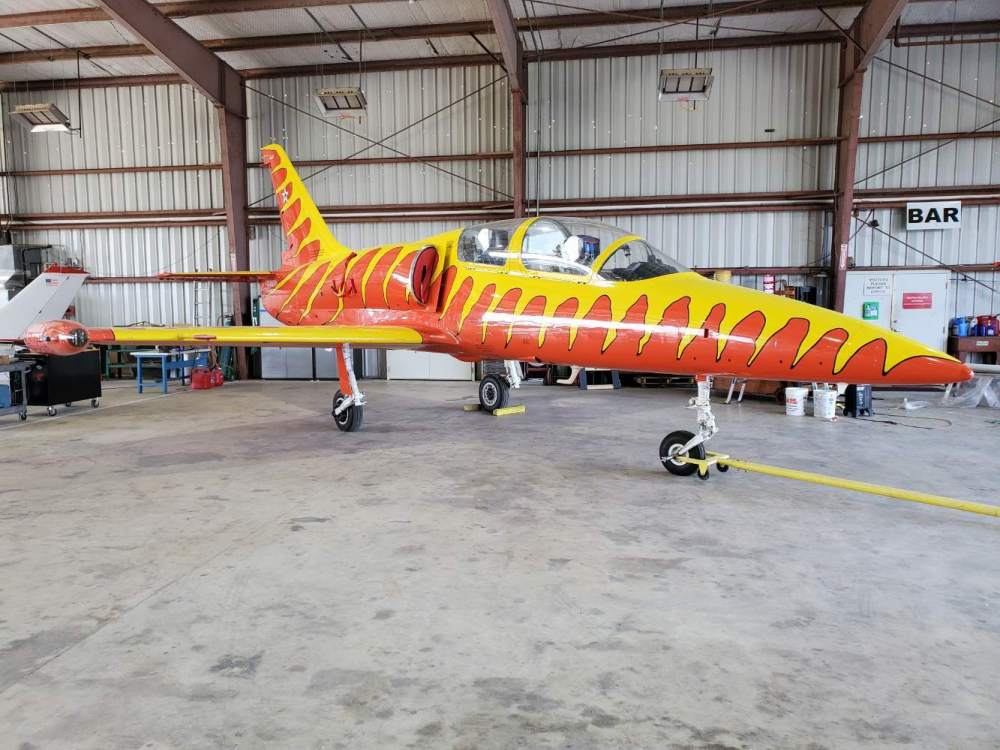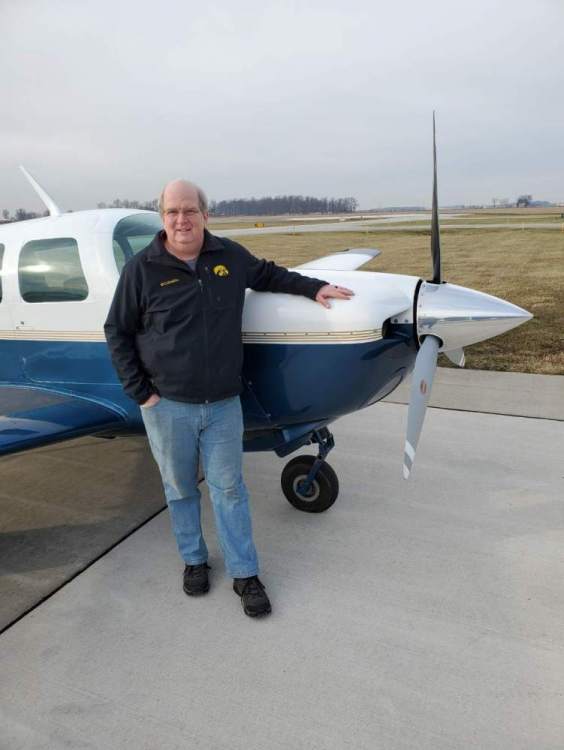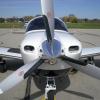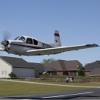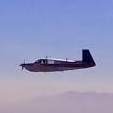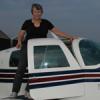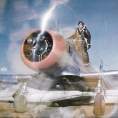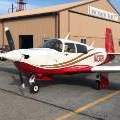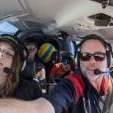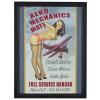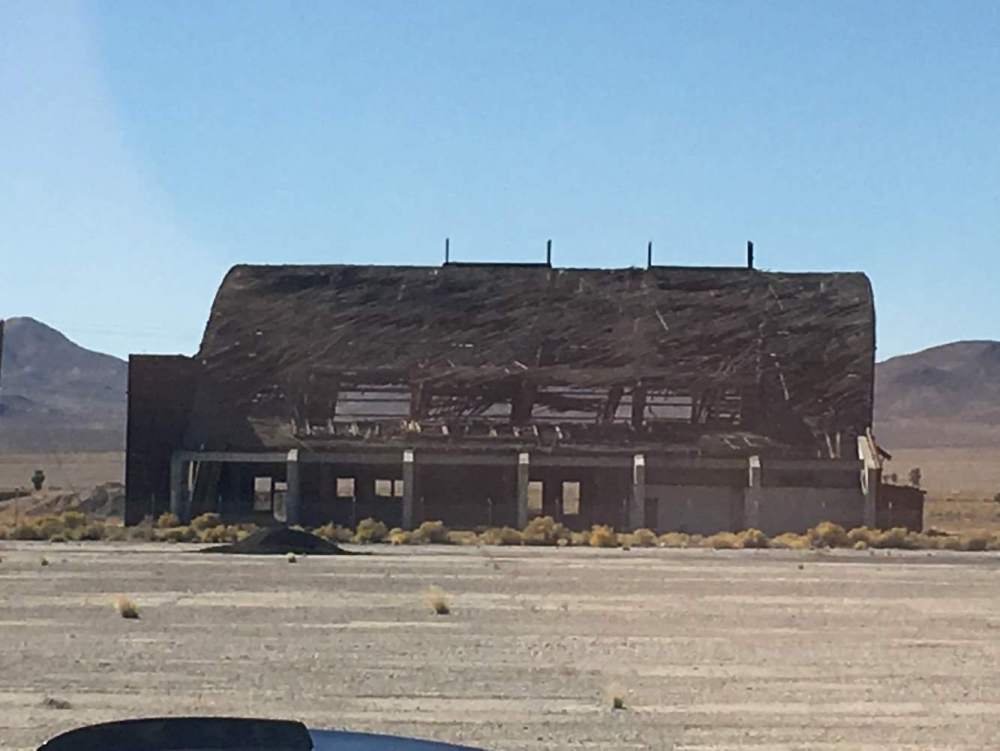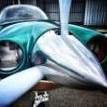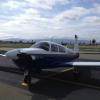Leaderboard
Popular Content
Showing content with the highest reputation on 01/15/2022 in all areas
-
I am sure the veterans of MS have seen more new guys than they can count. Add me to the list. Brief vitals: Started flying 1987 - US Army, flew Blackhawks, maintence test pilot until 1996. SEL training in early 90's but never flew alot as military duties were demanding. Stopped flying in 1996 until 2004 - got current and flew about 30 hours until had an eye issue. Christmas 2020, announced my intentions to my family, they gave me a Honeywell Alpha & Bravo set plus X-Plane. I logged 90 hours of training - ok, maybe 5 hours was just goofing around, but I did a lot of IFR enroute practice 2021 - BUSY YEAR: eye doc said issue resolved, decided to get active again, ME gave me a thumbs up on a 3rd class medical, CFI got me current, FAA said not so fast - 3 months later got a special issuance. I spent over a year thinking and researching what plane to buy and picked up a M20J yesterday. My A&P/IA/CFII and I flew 300NM in a C172 for pre-buy and pick up. I flew the 172 back, my first cross country solo in 17 years and here I am.... glad to be here let the advice roll in9 points
-
I was just offered a ride. Nice looking couple came into the steak house and they were both wearing polo shirts that had TexJets on them. I asked them what TexJets was, and he said it is an FBO at Meachum airport up near Fort Worth, Texas. I then asked what he flew and he said an L-39. I looked at him and said "the Russian trainer jet? An Albatross?" He obviously was very surprised I knew his plane. Long story short, after talking with him/them enough, he offerm me a ride!!!!! It is hangared here at KERV.5 points
-
5 points
-
There simply aren't enough airplanes to make it work. While there are 200,000 GA aircraft in the US, there are 286 million cars. So there are economies of scale to allow car dealers to have large networks. And commonality of electronics with CANBUS now. Even so, you're paying $120-150 an hour these days, but they have high efficiency due to standardized products and training to service them. If you tried to do it with GA, you'd expect to pay $200+ for shop rates. The 200,000 planes have very little commonality fleetwide. It's more comparable to setting up a network to service exotic cars.4 points
-
When My IA started crapping out , I replaced it with a G5 and never looked back. After a year or so that single G5 turned into a G5 HSI, Garmin 530W, Stratus transponer,ADSB,SL30, PMA 8000b, GFC500 AP, and a new panel to fit it all in, electric step from takair(memeber here), and removal of the vac system . Did i think that single G5 would lead into all that? No. Would I do it again? Yes.3 points
-
I've been very happy with Savvy. They are more than willing to analyze my engine data, and help with troubleshooting. Not to mention, if I'm ever stranded they are available 24/7. In the scheme of aviation costs, their annual fee is a pittance. (I have no connection with Savvy, so this is an honest, unbiased, opinion)2 points
-
Those rides usually come with a gas bill, OUCH! If you have gas money, jet warbird rides are easy to come by.2 points
-
Regardless of scientific data, dB analysis, ANR research or any other auditory study.... I wear QT Halo's, my co-pilot wears the ANR. I have tried both. The ANRs a nice, the QT Halos are better. I can hear the controller clearer and never miss a call with the QT Halos. not so much if I wear the ANRs. it seems to me that the first word is clipped in the active noise cancelling and I can set the volume lower when wearing the Halos. Just my real world observations. No science involved.2 points
-
I think Alex hit it on the head. There actually are facilities like that, most of the big FBOs have regional maintenance facilities associated with them, but most of us can’t afford them for our aircraft since they have to charge jet rates to try to retain the mechanics. Even then, many mechanics/technicians can make more in other endeavors. I think it would be great if someone could figure out a model that works, but right now, what little money comes in is hard to split up further…. Savvy may be the closest to having something that is outside of the OEM and presents some level of consistency….but even they are not for everybody.2 points
-
I'll take a stab at this one: Owners are accustomed to paying rates that are too low for an astute entrepreneur to carve out a profit sufficient to go though the expense, risk and effort to standardize processes and manage multiple locations. Skill sets needed are too varied from one aircraft type to another and numbers of those flying too low in many cases to realize a benefit from internal training methods beyond the A&P or IA certification Military contractors and the majors will always have an advantage because they can leverage the very factors lacking for GA as listed above. Alex2 points
-
Keep in mind that purchase price is going to be a small part of multi-year ownership...I'm a little over four years into ownership and I've already spent more operating than I paid to buy my plane2 points
-
It’s possible your cockpit was cleaner than mine…. We got a whole bunch of new PIC procedures after that one… lots of paper charts and things were popular back in the day… I’ve only seen an iPad go flying once… Best regards, -a-2 points
-
Welcome aboard…….. everyone on here was a “New Guy” at some point….. MS is the most active forum I’ve ever been involved with and the most informative…….. I’ll warn you, better post a pix of your bird or we’ll never believe you….lol2 points
-
2 points
-
When I first got into airplane ownership, I could get an attitude gyro overhauled for $250, Now it is closer to $900. Unless you are going electronic, I would get yours overhauled. If you buy used, there is no guarantee it isn't a few hours from going out. They always make it 15 years or so.2 points
-
It has probably gotten an air bubble in it that tries to expand at higher cabin altitude, so that's when they drip. +1 on the repair kit, but they're kinda hard to get right, i.e., no bubbles, unless you reassemble it submerged in the compass juice (compass fluid). Also, it is not actually legal for even an A&P or IA to do this, it *should* only be done at a properly authorized instrument shop repair station. However, this is a job very often done by hangar fairies and some are quite experienced at it.2 points
-
that’s great to read. We’ve saved a lot of cylinders with the ring flush cocktail and made a lot of folks happy. It’s not always just one cylinder either. But it doesn’t always work and sometimes the solvent needs to sit in the cylinder over night to get some particularly caked rings unstuck. But when it works everyone’s happy. Sent from my iPhone using Tapatalk2 points
-
Not really impressed with Mr. Mojo’s in-depth understanding of Mooneys. First, there’s a good bit of difference between the speeds, space, and performance of the various models of Mooney M20. (A through U?) Second, he started off talking about the manual gear, then showed us the electric-gear one. Third, he told us how cramped they are, without differentiating between the short bodies, the long-bodies, the ones with articulating seats, or pointing out the sports-car low seating with legs stretched out front. We had plenty of room for four adults in our K model, and even more leg room in our Screaming Eagle. Seems like he could have spent a little more time on his “preflight” before taking to the air.2 points
-
I have the 406 ELT in the plane ready to flip the switch in an emergency, it’s wired to my GTN for WAAS position source. I also have the portable 406 ELT if i need it on the ground and aren’t incapacitated. Lastly I can communicate my actual needs to SAR via my Garmin inReach via text messages. There is also a portable radio, plus a survival pack with water, food, first aid kit, shelter material and signaling devices including strobe, mirror and marine flares. Each annual it gets re-packed. Don’t count on flight following to get you aide faster since most lost aircraft don’t communicate or don’t have time too. Filing a VFR flight plan gives SAR folks much needed information to find you fastest. But always leave your cell on since the first thing SAR folks do these days is have your mobile carrier ping your cell phone for a location. But if you don’t have a 406 to activate, nor able to get a radio call out like most, it could be many hours before anyone starts looking for you. Sent from my iPhone using Tapatalk2 points
-
I’ve got one and I love it. I’ve got a shoulder that has issues and it works great and doesn’t impact my shoulder. Sent from my iPhone using Tapatalk1 point
-
1 point
-
Nope! He just conflated indicated airspeed with true airspeed! Doesn't know the difference. 135knots indicated at 8000ft is in fact 150-160 knots true depending on conditions. Instead he goes on saying how it can do 200 knots with a tailwind. So can a cow sucked up in a tornado. True airspeed is the only relevant comparison between airplanes so that when they both depart in the same wind, you can estimate how long it will take them to reach their destination. Your wish is granted.1 point
-
I've wondered why there aren't any nationwide aircraft maintenance companies that service GA. Sure their are authorized service centers, but why aren't their national or regional maintenance companies? I've seen more and more shops closing over the past few years. Many in part because the owner, while a good mechanic, isn't a good business person. Or, they get older and haven't trained up a new owner, so they shutter the doors. At the same time I've seen the remaining shows get insanely busy and in some cases their quality decline. A national or regional provider could standardize quality and training. Moreover they could offer more stable employment and career paths. Of course it doesn't provide some of the benefits of owning your own business for the A&P, but then again not everyone wants to be a business owner. Seems like an opportunity to start something, or start rolling up some of the good shops that are out there.1 point
-
I use Savvy Mx too. It is nice on a Sunday at a distant desert airport KIFP with no services, to be able to have a Savvy Mx guy call me back in 30 minutes to discuss my possible aog problem and safety of continued flight. I like having Savvy interpret the EDM downloaded engine data a couple times a year and before annuals. I like discussing the annual inspection estimate with a Savvy MX guy to decide which items may not be required or done later a more economically way or options. I agree with what MikeOH said about $700. annual cost in the overall scheme. Savvy has always been prompt for me. Just my experience. Tom1 point
-
Nobody will notice till an accident investigation or perhaps a log book review by a FAA inspector following an incident. virtually every leak that results from re-installing the tank comes from improperly rigging the valve to shutoff - probably over 90% of them. We’ve all suffered from that one. But very occasionally it’s the high pressure o-ring or a low pressure fitting needs replacement. An experienced tech will check for these. Sent from my iPhone using Tapatalk1 point
-
I don’t think any of the “end of the world” discussion was political, at least none I saw said anything about one party or the other. However I’d argue that understanding the current economic reality may well play into whether or not to make a large purchase or not now, which I believe was the question. If I had a crystal ball and could tell you where we would be at in one year or five years, then I could answer that question, but I don’t. I do feel buying now is buying at the high or close or it, some don’t, they believe prices will continue to rise, but then many thought you couldn’t lose money in a house prior to 08 too. Either way for most an airplane shouldn’t be looked at as an investment, they are a depreciating asset. However I think it uninformed to think the current situation is the normal ebb and flow, it’s actually historic “we” have never been where we are now, there’re is no precedence, you can’t say this is what happened last time we were here.1 point
-
Got it ... pics are a priority. That one will have to do for now, we got 8" of snow last night.1 point
-
Feel free to stop in here at MYR(my base) or CRE on your way back, i'll can meet you at airport and if time for lunch we can go for lunch,. Or anytime you want to just fly down, looks like a pretty short hop. - King M.1 point
-
I agree, I really don’t care who sneaks into my hangar at night to fix my plane as long as they do a good job.1 point
-
My thinking is safety net. WAAS is like that extra 1 hour of fuel. I plan not to need it, but I suspect one day I’ll screw up and ending up needing it.1 point
-
Yes thanks....I did get one of those Sensorcon CO detectors. I didn't blend any cold air in so I'll definitely do that next flight.1 point
-
Hi, Not without its challenges :). A VFR flight that was pretty much IFR from the get go. Even shooting an approach (VOR/DME) at night for the first time in like forever...with a night landing...only my 2nd landing in the Mooney....I think. The engine and prop performed well and showed no issues. I did a quick radar vectored ILS (VFR) upon leaving Calgary as the wx at destination was not good. I'm glad I did though as it showed that the GS portion of the ILS receiver was not useable but the localizer was good. I used an iPad and Garmin Pilot for all the cross country NAV and even for an Arrival I was given and it performed very well......really highlites the need for a fully integrated NAV system though such as a Garmin GTN750Xi/GTN650Xi. The Bendix King stuff has got to go at some point. There are a few other little snags that need to be addressed ASAP...but thats the joy of ownership The video below (iPhone so forgive the production quality) shows the plane also needs a good dusting and a new glare shield :). This is where I was up at 12,500'...contemplating my chances of survival should the engine fail while over the cloud It was a busy time trying to get used to the aircraft and keeping up with ATC on arrivals and departures...missing a co-pilot1 point
-
You all recall a couple of things… 1) New guy is searching for a Mooney… 2) Discussing the end of the world politics… probably isn’t that helpful…. 3) If it was…. Grab the free money while you can, break out the old O’president free phone, and plan to live in a box… it is better for affording a giant Mooney…. 4) Same political drama on a different day… Milton Friedman was brilliant…. 5) And yes… in another thread we see that Covid is a hoax, corporate America wants it to exist… 6) Economics cycles always occur… nobody likes the down turns… but, they occur anyways… 7) For some reason economic cycles get discussed like a baseball game…. We have been in the early innings for a lot of years… 8) Raising interest rates slows things down incredibly well… 9) Remember Alan Greenspan… he only got one thing wrong…. MS stays apolitical for a reason… Now back to helping out the new guy…. PP thoughts only, not a politician… Best regards, -a-1 point
-
Get a G5, you will not regret it. Its modular, many add on features, IFR flying easier with information shown.1 point
-
1 point
-
People like to call their 25 year-old 1000 hour engine “low time.” Everyone knows the hour TBO but we seem to forget that Lycoming has a 12 year TBO limit also. Sure, Part 91 operators are free to ignore it, but I think Lycoming is making a point: Don’t expect TBO hours if it sits a lot.1 point
-
I paid about $750 to get my vacuum AI overhauled and it lasted about a year before it failed again. I replaced it with a 2nd G5 and deleted the vacuum system. No regerts.1 point
-
This whole thread would be unnecessary if Garmin would just make the STC documentation available to owners (who pay the bills, BTW). Then the OP could have just looked it up. Does your autopilot have a GO AROUND (a.k.a. TOGA) button that closes momentarily to ground? If so, you can hook the GTN up to it and pressing GO AROUND will cycle the GPS onto the missed approach (assuming there is not some configuration detail hidden in GI installation that prohibits this). It works with my G3X / GFC 500 but it shouldn't matter to the GTN -- it doesn't know what kind of autopilot you have. Skip1 point
-
You need a big beefy guy like @ragedracer1977 to bend the engine mount when the bolt holes don't line up by like 0.020".1 point
-
My hangar isn't anything special but I do have one of these in it: https://smile.amazon.com/MIDEA-MAD30C1YWS-Portable-Dehumidifier-basements/dp/B07NRDBBH5/ref=sxin_14?asc_contentid=amzn1.osa.ad4c9e4e-d868-4f3d-b9f0-8addc39b845f.ATVPDKIKX0DER.en_US&asc_contenttype=article&ascsubtag=amzn1.osa.ad4c9e4e-d868-4f3d-b9f0-8addc39b845f.ATVPDKIKX0DER.en_US&creativeASIN=B07NRDBBH5&crid=12NS0AH5UT874&cv_ct_cx=portable+dehumidifier&cv_ct_id=amzn1.osa.ad4c9e4e-d868-4f3d-b9f0-8addc39b845f.ATVPDKIKX0DER.en_US&cv_ct_pg=search&cv_ct_we=asin&cv_ct_wn=osp-single-source-earns-comm&keywords=portable+dehumidifier&linkCode=oas&pd_rd_i=B07NRDBBH5&pd_rd_r=3b84667e-66a0-4bb9-a723-ac93f4ffc9b6&pd_rd_w=RRyuC&pd_rd_wg=wqLBO&pf_rd_p=5846ecd6-3f37-4a28-8efc-9c817c03dbe9&pf_rd_r=KHPACRDJ3JEX7Q5QQWD6&qid=1642202820&sprefix=portable+dehum%2Caps%2C134&sr=1-1-64f3a41a-73ca-403a-923c-8152c45485fe&tag=21oak-20 It was recommended by someone on the forum a year or two ago and I was initially skeptical that it would do much. It actually works really well. After a rain when water runs across the hangar floor, it will dry the concrete in about a hour. According to the display it maintains about 40-50% humidity in the hangar when it 80-90% outside.1 point
-
My hanger elves (fairies is not PC these days) have told me the best way to fill a compass is to fill it with compass fluid, till there is a meniscus of fluid above the fill port, put your finger over the fill port and turn it upside down and gently shake it to get all the bubbles out from under the compass card. Then slowly turn it right side up and work the bubbles back to the fill port. Use a coffee stirrer to add the last bit of fluid until there is a meniscus of fluid above the fill port. carefully bring the plug into the fluid and screw it in. Rotate the compass every which way and make sure there are no bubbles inside. If you find any repeat the above procedure until there are no bubbles.1 point
-
It's likely between age or vibration that a seal is wore out. They sell refurb kits for the old school compasses but be careful to to not screw down the case down too much or you'll crack the glass (which is $40 btw, ask me how I know....) BTW, what's a "standby compass"? Do you mean your primary (or only) magnetic compass or do you have two magnetic compasses in your aircraft? I ended up after much flailing with my old compass in which I replace the seals, fluid, glass, and mount -- installing "SIRS Compass" Bruce P.S. If you're anywhere near the SO CAL area and can get to L00 (Rosamond Skypark). I'll happily give you what I have in regards to the Airpath Compass if that's what you have. I may have the refurb kit, fluid and some parts still laying around.1 point
-
1 point
-
1 point
-
I tend to agree, it used to not be a problem, but since then fuel has changed, and I believe Crane Cams was Lycoming’s supplier, and did they go under? I am not sure Crane made their cams, so maybe, maybe not. So far as dry starts, pre-lubers we’re in fashion in the 70’s, were supposed to greatly extend the lives of many engines that accumulated a lot of use like OTR trucks etc. But unfortunately they didn’t, one can only assume “dry” starts aren’t as harmful as many say. I think calendar time is more harmful than we realize1 point
-
Add to that, field elevation 3,048 feet, temperature 27 celsius and a 25 kts tailwind (plus downdraft from the hills)... impossible to climb 5,000 in 9 miles in a M20C with full tanks. So my mistake, I should have never accepted the SID. But I did... so ATC complained rightfully to me, but luckily I was VFR so they basically said ok... go ahead. I had done that flight before and they had given me a different SID, so I did not prepare myself for another SID. Lesson learned: do you homework, you are the PIC and if it does not work, then just say: unable.1 point
-
Biggest Mooney myth.......being sucked out of a Mooney when the door pops open in flight !!1 point
-
Well, there’s a myth among Cirrus owners that Mooneys really aren’t that much faster….1 point
-
After a long process I finally bought into a 50/50 partnership in a Mooney Bravo, of N9149P. PS. anyone wanting a 1/3 share in a M20C in Indianapolis let me know ;-) I put 100s of hours on the M20C and enjoyed every moment. The lure of backseat leg room for the kids, TKS, O2, new airframe, and SPEED finally got to me when a friend offered me a share of his Bravo. It was a bit of a difficult path. While working on my IFR ticket I watched a Mooney Bravo crash at my airport (KHFY). That didn't stop me from flying, but it's an image that I can't ever forget. A few years later I started looking at my friend's Bravo. He had two other partners, one of which had upgraded to a TBM and wanted to sell me a share. I was interested, but was holding out for a twin or 6-seat single so I could take my whole family. 18 months later tragedy struck. My friend's partner died in a crash with the co-owner of the other partner's TBM. All at once, my friend had a deceased partner and a partner that had lost his TBM and gave up flying. It got messy for 12 months, and I won't go into the details of what my friend had to unravel...needless to say our partnership has an exhaustive set of by-laws. With all of my friend's details sorted I decided to take the jump. I had to remind myself the airplane does not have emotions. It doesn't know the story. If I treat her right, she will treat me right. I'm really excited! Flying the Bravo has been a lot of fun, it's a different sight picture and heavier on the controls...but man she can go fast & climb. While the Bravo doesn't have 6 seats it's perfect. (Yeah, my wife will have to fly commercial if we go on vacations, but she gets a glass of wine and a few hours away from the kids!) We have a lot of work to do...O2 system/tank needs to be serviced/replaced, TKS needs to be checked, new gear pucks, and a few other things. Oh, and the engine is over TBO. The buy in was reasonable and we have some work to do...but that's all spelled out in our agreement and in the end we'll have a beauty! Open to advice about Bravo's. MS has taught me so much already.1 point
-
If it were me I would replace the breaker and be done with it. I don’t mind fixing a problem once. But I don’t want to deal with it over and over again. Odds are it will fail for good when you are far away from home and no mechanic is on the field.1 point




